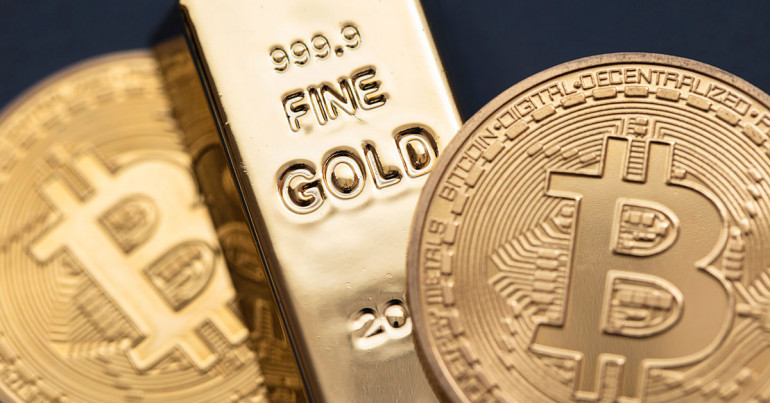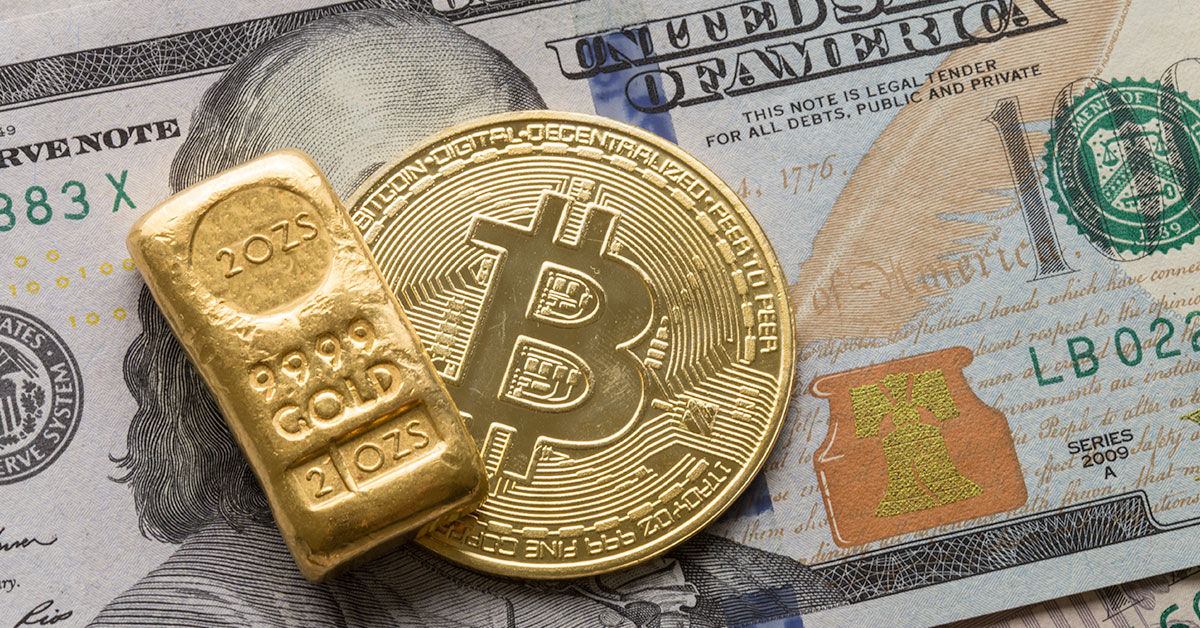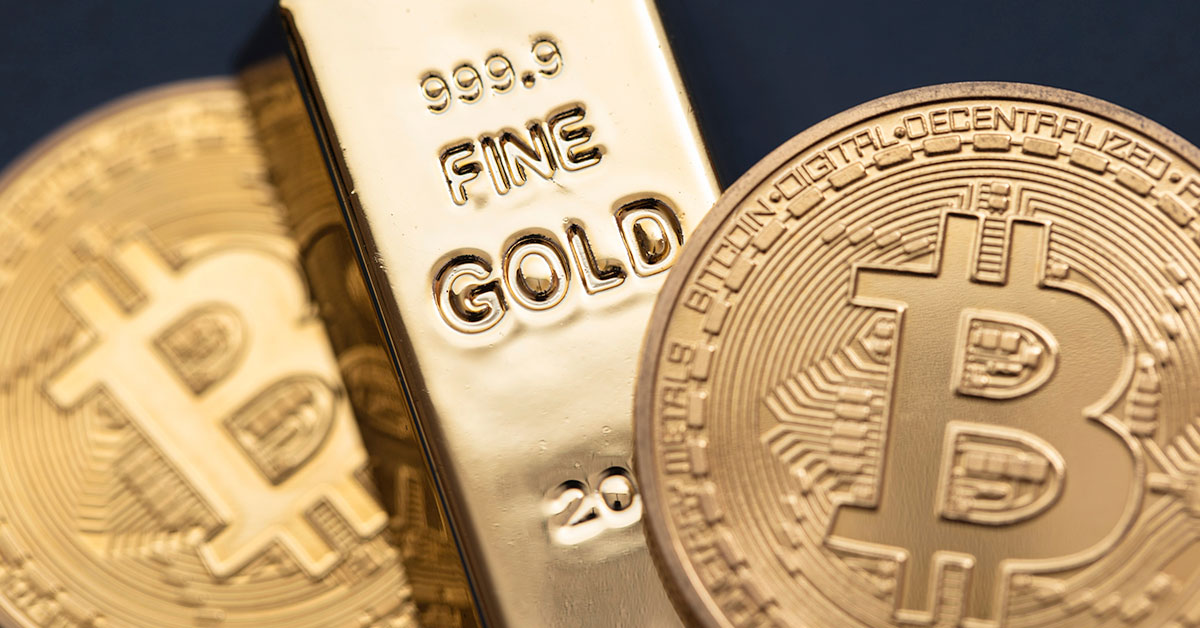
Gold has been an object of value for centuries, representing wealth, power and stability. Its usage has evolved from ancient civilisations using it as a medium of exchange, to modern nations pegging currencies to its value. While it has always played an important role in the global economy, a particular chapter to highlight would be the period of the ‘gold standard’. This refers to the system of a currency in which a specific amount of gold is linked to it. Since the 2008 financial crisis, Bitcoin has emerged as “digital gold”, a cryptocurrency perhaps suited best as an inflation hedge rather than a medium of exchange. Both assets are used in this way, as a hedge not only for inflation but also for general uncertainty in the long term health of fiat currency. Throughout this article we will compare Bitcoin and gold across various dimensions, so you can make informed decisions on your portfolio. (As always, this should not be considered financial advice).

What is Gold?
Gold has had many use cases over its centuries long relationship with humanity, from currency and store of value to jewellery. Its physical properties contribute to its sought-after status, of scarcity, durability and divisibility. It has universal appeal as a symbol of wealth, with central banks around the world holding it on balance sheets as a reserve asset. While it is no longer directly backing currencies, it is still held to prevent hyperinflation or economic shock – the US currently holds 8133 tons in its reserves. With inherent qualities and widespread acceptance, prices typically rise during market volatility and economic uncertainty.
What is Bitcoin?
Introduced in 2009, as a response to the 2008 financial crisis by the anonymous developer Satoshi Nakamoto, Bitcoin is a decentralised digital currency based upon blockchain technology. Despite the images of gold coins used in media to represent it, Bitcoin exists purely digitally, entirely separately from any physical asset or government control.
Bitcoin has a limited supply of 21 million coins. While trust in gold comes from its historic significance and inherent properties, trust in Bitcoin comes from the infallibility, transparency and inevitability of transaction processing through the blockchain. Like gold, Bitcoin is also considered an inflation hedge, yet perhaps more speculative and volatile in its current stage, outside of the “traditional assets” category.
Key differences between Gold and Bitcoin
There are a number of differences that separate Gold and Bitcoin beyond the clear digital and physical comparisons.
Tangibility
It might be an obvious point – but gold is a physical asset. It is worth noting this, when compared to the intangibility of a digital bitcoin for example. A physical presence perhaps gives a greater sense of permanence.
Bitcoin’s entirely digital existence may actually be more secure, through entries on the blockchain ledger, easier to transfer and store etc. however investors new to digital assets may find its lack of tangibility unsettling.
Scarcity
Gold has natural scarcity, a finite amount based purely on estimates of its total availability on earth. New discoveries however, will increase supply.
Bitcoin has a scarcity of 21 million coins hard coded into its protocol, with 19 million currently mined. The fixed supply gives a predictable nature to its supply, unmatched by gold.
Portability
Gold is a heavy and bulky material, difficult and expensive to store – especially in large quantities. Bitcoin can be stored very easily, with any amount able to be transferred across the world in minutes using only a phone or computer.
Divisibility
Gold can be divided, but requires specialised equipment. A particularly small denomination of gold may be difficult to transact with properly. Bitcoin is highly divisible, split into tiny units known as satoshis. Each satoshi represents 0.00000001 Bitcoin, making it suitable for transactions in tiny denominations.
Volatility
Traditionally, gold has enjoyed a relatively stable existence – gradual fluctuations are influenced by supply, demand and overall economic conditions, but is generally considered somewhat of a ‘safe haven’ during market downturns. Bitcoin on the other hand, is currently an extremely volatile asset. Dramatic price swings can occur within very short time periods, which can deter traders with a low tolerance for risk.
Utility
Gold’s use cases go beyond inflation hedging – it has industrial and decorative uses, in electronics, dentistry and jewellery. Bitcoin is primarily a digital asset, serving narrower purposes of transaction, and storing value without intermediaries.
Market Dynamics
Gold has a more established market, with fewer tendencies for speculative investing. The price is influenced by central banks, mining yields, and the demand for jewellery and technology. The Bitcoin price is driven by adoption rates, overall market sentiment (or tweets from Elon Musk), news events regarding adoption and technological advancements. As the market is relatively young, swings tend to be more dramatic.
Regulation
Being widely accepted, with a history of worldwide usage, gold has become highly regulated with a stable legal framework. At this point, major government interventions into how investors can interact with gold is unlikely. Bitcoin has a rather more uncertain regulatory landscape, with many jurisdictions yet to impose restrictions or tax policies on it.

Responses to Geopolitical Events
Gold has enjoyed a long history as a “safe haven” asset, with investors flocking to it in times of instability or uncertainty. An example of this would be during the 2008 financial crisis, where gold prices surged in response to confidence in banking systems reaching an all time low. As a newer asset, Bitcoin responds differently, in a rather more unpredictable way. Price movements are often more volatile – it may not be a safe bet currently in times of crisis.
Conclusion
Despite their similar descriptions, Bitcoin and gold represent two distinct forms of value, with unique advantages and challenges. While gold has stability, universal acceptance and a tangible nature, Bitcoin operates digitally, in a decentralised way – a scarce asset that has proved itself as a revolutionary financial asset. Choosing between both depends on your investment goal, tolerance for risk and core beliefs about the future of finance. Including both in a diversified portfolio may provide a balance between stability and growth, ensuring preparedness for a rapidly changing financial landscape.
As always, for currency news and insight into the world of currency, make sure to stay up to date with our Expert Analysis, as well as our daily Market Commentary.
Caleb Hinton
Caleb is a writer specialising in financial copy. He has a background in copywriting, banking, digital wallets, and SEO – and enjoys writing in his spare time too, as well as language learning, chess and investing.



